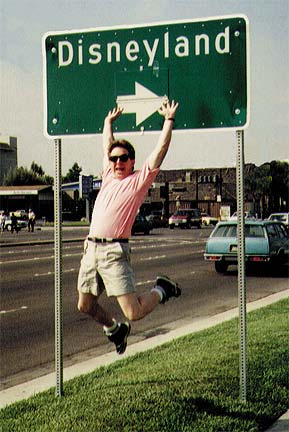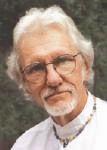 |

Greetings, bio
lovers. |
|
My goal,
even as a tiny kidling, had always been to one day
support myself as an artist.
High school was encouraging, though woefully inadequate in
preparing me for the task, so after graduation I enrolled
in the liberal arts program at the local JuCo.
I paid the bills, not to mention tempting fate, by working
in a machine shop at a place called Media
Valve. The money was good but it was a lethal
environment that sent me to the infirmary more than once.
Broken fingers,
shards of metal in my body, toxic substances, all kinds
of
unpleasant experiences I won't soon forget. I worked the
3PM to midnight shift which proved providential to my artistic
fortunes. As I returned home late one night, I heard
a radio conversation which changed my life.
A local commercial illustrator, who turned out to be the
nationally-known Don Punchatz, (Remember the game DOOM?
Don did the cover art.) was being interviewed by our local
lefty FM station. He said he was looking for artists
to showcase in a new fantasy magazine he was hoping to
produce,
ala Heavy Metal. As it happened, I'd been working on just
that very sort of thing in my spare time, so I visited
Don
the next day and presented my modest portfolio. He was impressed
enough to hire me as one of his many flunkies.
Don liked to to hire art graduates and pay them a modest
wage to do the grunt work on his copious illustration assignments.
Almost every single person he hired eventually left his employ
to become a major player in the commercial art scene, so
it
was a very fertile environment. I, personally, was only allowed
to do the most menial of art tasks but I learned more there
than I ever learned from the public educational system.
After
six months in Mr. Punchatz's employ it was mutually agreed
that I should leave and henceforth spend as much time in
the East Texas State University art system as humanly possible.
I
managed
to last an entire year before deciding to join
the
hordes
of other freelance illustrators in quest of the
elusive art dollar. I haven't looked back.
The magazine was never printed but that's okay with me. I
was able to get out of the machine shop with all my limbs
intact. Life is good.
|
|
Don Ivan Punchatz, King of
Illustration
 The
extraordinary man almost single-handedly
responsible for my career as a starving artist died
10-22-09. The
extraordinary man almost single-handedly
responsible for my career as a starving artist died
10-22-09.
Back in 1970 Don
Punchatz started a modest artistic enterprise called The SketchPad
Studio. From this cluttered space deep in the southern end of Arlington,
Texas, he grew to be nationally recognized as one of the best in the
commercial illustration business and his artwork has graced the covers
of almost any magazine you name to choose. One of his paintings hangs
in the Smithsonian Portrait Gallery. He was the go-to guy for modern
sci-fi illustration and was, in fact, the man responsible for the
artwork on the box of Id software's "Doom". Yes, that Doom.
He was in such demand that he started hiring art graduates eager to apply
their skills to the Punchatz method. Don was a great teacher and an even
better inspiration as almost everyone who spent any time at the Pad left
to begin successful careers of their own.
I first heard of Don Punchatz in the summer of 1977 when I returned home
late one night after my shift on the turret lathe at the machine shop,
where I slaved to make a living. The radio was on as I entered the apartment
and the midnight DJ on my
local left-wing public radio station was interviewing some weirdo who
turned out to be Mr. Punchatz. Don was there putting out a call for new
art for a Heavy Metal-ish magazine he intended to publish. By some quirk
of fate I was working on just that very thing and hustled down to his
studio the next day with my modest portfolio in tow. (Sadly, the magazine
was never published.)
He liked my artwork well enough to hire me basically as a gopher and
doer of menial art tasks, though he tossed some lesser assignments my
way, too. Most importantly, even though I wasn't contributing creatively
I was able to see how the commercial art process worked from close up.
To put it simply, the commercial art business wasn't quite what I thought.
It was better. A lifetime of personal exploration in the craft couldn't
have
taught
me
any better
lesson than the five months I was in Don's employ.
After a few months Don encouraged me explore formal art training at East
Texas State University, the place to be in North Texas for commercial
illustration study. And so I did. Who was I to argue?
I didn't see him again until about three years ago at a friend's
art exhibit. I was stunned that he remembered me and even more astonished
when he exhibited a bit of pride in my career. I misted up as we briefly
hugged and clapped each other on the back. Sad to say, I never saw him
again.
Don was an amazing human and there is much sorrow in the arts community
with the passing of this fine man. But in his wake he left a staggering
artistic legacy, two wonderful children and a legion of talented people
touched by his creativity who will continue to carry on his mission not
only in their art but in their hearts.
Thank you, Don. For everything.
You can read the
New York Times obituary here.
|
Mike Stanfill, Private Hand - 2330 Jonesboro - Dallas, TX 75228 - 469-279-0317
|

